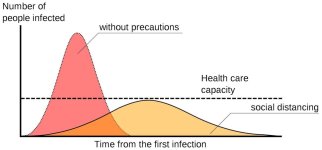BillE
New member
- Joined
- Jun 9, 2016
- Messages
- 283
- Reaction score
- 0
- C Dory Year
- 2004
- C Dory Model
- 25 Cruiser
- Vessel Name
- TBD
We do not know if the Swedish total will be proportionally higher than here or other nations------in the long run. It may just be that some are dying sooner rather than later. The only benefits to social distancing are to flatten the curve, which does not reduce the totals but only spreads cases over time to make them more manageable by the health care system. If Sweden's health care system is not overloaded, then their experiment with quick herd immunity may not be costing them anything in total deaths.
Now delaying potential deaths until there is a vaccine or treatment can save lives, but that may require being locked down for a year or more.
Can any country survive that? I'm not going to knock the Swedish experiment, yet. We just can't tell at this point. Plunging the world into a global depression has costs in human lives too.
Now delaying potential deaths until there is a vaccine or treatment can save lives, but that may require being locked down for a year or more.
Can any country survive that? I'm not going to knock the Swedish experiment, yet. We just can't tell at this point. Plunging the world into a global depression has costs in human lives too.


